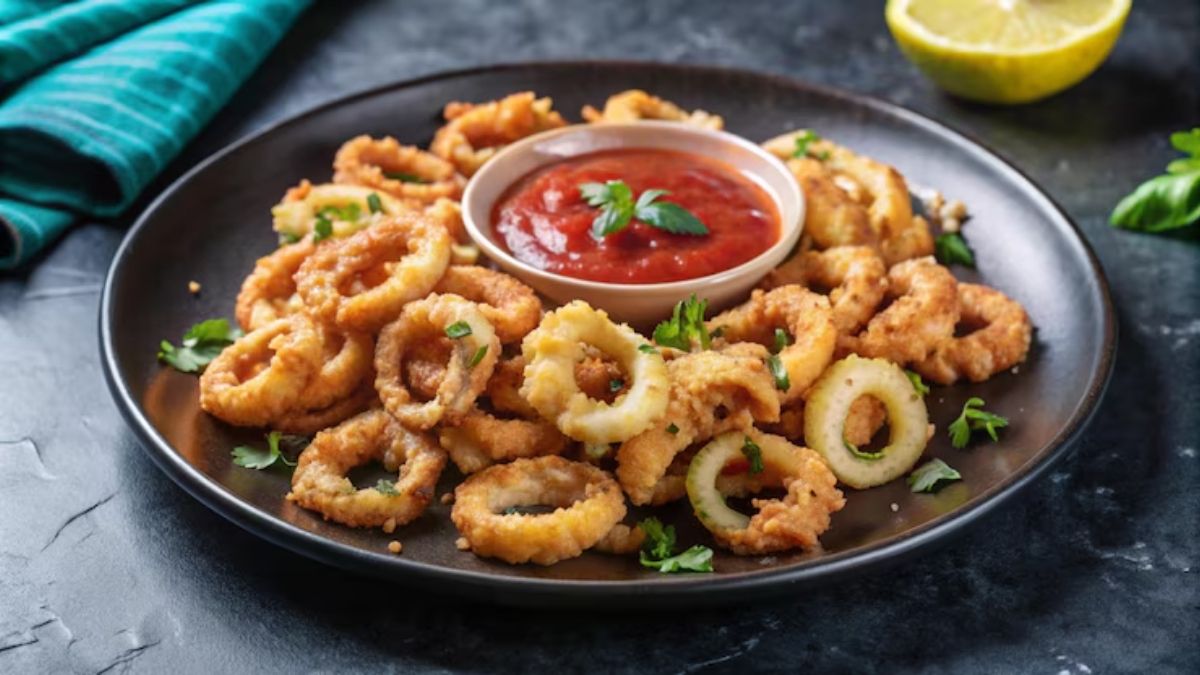Calamariere is a word that may sound unfamiliar but refers to one of Italy’s most cherished seafood delights—calamari, or squid. This versatile seafood has long been a staple of Italian coastal cuisine, celebrated for its tender texture and ability to absorb flavors. From the shores of Sicily to the Amalfi Coast, calamariere embodies tradition, culture, and culinary artistry.
Whether you are a seafood aficionado or a curious food lover, understanding calamariere will deepen your appreciation for Italian cuisine and inspire you to try authentic recipes at home. This guide explores the history, preparation techniques, popular dishes, and nutritional benefits of calamariere.
What Is Calamariere?
The term calamariere originates from calamari, the Italian word for squid. It can refer broadly to squid dishes or, in some regions, to squid fishing and markets specializing in this seafood. Squid is a cephalopod mollusk, related to octopus and cuttlefish, prized in Mediterranean diets for centuries.
Italy’s coastal communities have embraced squid as an essential source of protein, shaping rich culinary traditions around it. Calamariere represents not only a food item but also the spirit of coastal life, community gatherings, and celebration.
The History and Cultural Importance of Calamariere
The culinary use of squid in Italy dates back to ancient Mediterranean civilizations, including the Romans and Greeks. Squid was both a food source and a trade commodity. Over time, Italian cooks refined its preparation, turning it into a delicacy that reflects local heritage.
In towns along the Mediterranean, calamariere is more than sustenance—it is a cultural emblem. Festivals and family gatherings often feature fresh squid dishes, underscoring its role in shared identity and tradition.
Popular Ways to Prepare Calamariere
Calamariere’s appeal lies in its adaptability. It can be fried, grilled, stuffed, or simmered, each method highlighting different flavors and textures. Here are some of the most beloved preparations:
Fried Calamariere (Calamari Fritti)
Arguably the most famous dish, calamari fritti features squid rings lightly coated in batter and fried to a golden crisp. The contrast between crunchy exterior and tender inside makes it a favorite appetizer. It is often served with lemon wedges and a side of marinara sauce.
Grilled Calamariere (Calamari alla Griglia)
Grilling calamariere brings out its natural sweetness. Typically marinated in olive oil, garlic, and fresh herbs, the squid cooks quickly over high heat, developing a smoky char. This preparation is light and perfect when paired with salads or simple sides.
Stuffed Calamariere (Calamari Ripieni)
Stuffed calamari is a gourmet delight. Squid tubes are filled with a savory mixture of breadcrumbs, garlic, parsley, cheese, and sometimes minced seafood or sausage. The stuffed squid is then baked or gently simmered in tomato sauce, creating a rich, flavorful dish.
Calamariere in Tomato Sauce (Calamari al Pomodoro)
This rustic preparation involves simmering squid in a tomato-based sauce seasoned with garlic and herbs. Often served with pasta or crusty bread, it is a comforting meal that showcases the warmth of traditional Italian cooking.
How to Cook Calamariere at Home
Cooking squid can intimidate many, but with a few tips, you can master calamariere in your kitchen:
- Cleaning: Remove the squid’s head, innards, ink sac, and cartilage before cooking. Fresh squid should smell clean and look firm.
- Tenderizing: A brief marinade in lemon juice or milk softens the flesh.
- Cooking Time: Squid cooks very fast. For frying, grilling, or sautéing, cook it for 1 to 3 minutes to avoid rubberiness. For stews or stuffed recipes, longer cooking is gentle but necessary.
- Seasoning: Keep it simple with salt, pepper, garlic, and fresh herbs like parsley to enhance the squid’s natural flavor.
Nutritional Benefits of Calamariere
Besides its culinary appeal, calamariere offers several health advantages:
- High Protein: Squid provides lean protein that supports muscle maintenance and repair.
- Low Calorie: It is low in calories, making it suitable for weight-conscious diets.
- Rich in Vitamins and Minerals: Calamariere contains vitamin B12 for nerve health and minerals like selenium and zinc.
- Omega-3 Fatty Acids: These promote heart health and reduce inflammation.
Choosing healthy cooking methods like grilling or baking preserves these benefits.
Where to Find Authentic Calamariere
For the freshest calamariere experience, visit Italian coastal towns such as Sicily, Amalfi, or Liguria. Local seafood markets and family-run trattorias often offer the best, freshest squid prepared using time-honored recipes.
Globally, many quality seafood vendors stock fresh or frozen squid, allowing you to enjoy calamariere at home wherever you live. Look for firm, translucent squid with a fresh ocean scent.
Conclusion: Embrace Calamariere in Your Culinary Repertoire
Calamariere is a treasure of Italian cuisine, combining rich history with versatile preparation. Whether fried, grilled, stuffed, or stewed, squid offers delightful textures and flavors that satisfy seafood lovers and adventurous cooks alike.
By exploring the story, techniques, and health benefits of calamariere, you invite a taste of Italy’s coastal heritage into your kitchen. Experiment with recipes, savor the freshness, and celebrate this iconic seafood delicacy that continues to delight palates worldwide.










